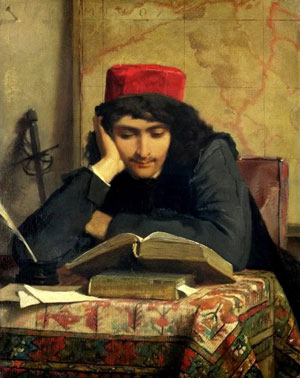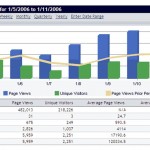
The Reader – Ferdinand Heilbuth 1856
It’s always the simplest things that we overlook in life. 21st century human brains seem to be wired to assume complexity in all aspects of our lives – and so we often miss the fact that the barriers to our success are oh-so-simple.
And so it is with optimizing artist websites for search engines. We can go to all sorts of great lengths to engineer the content of a website to attract the attention of the “right” visitors from Google, Bing, and Yahoo Search, but if the search engines can’t read and understand what’s on your artist website all your efforts are a complete waste of time.
In honor of the great time-honored art of reading, today’s article offers three very practical tips to help search engines make sense of your website content. Lets jump right in!
Tip #1 – Minimize Use Of Flash
That’s right! You’ve heard us mention this a few times recently and it’s time to say it again. Extensive use of Flash programming on your artist website will literally make your beautiful site look like a blank canvas to search engines. Search engines take quite a simple view when they scan a website – essentially what they are looking for is TEXT! When all your text is encapsulated within Flash they see nothing. Nothing to read, nothing to index in their database, nothing to recommend to web-searchers who might actually be interested in your work.
Focus on a site which makes substantial use of HTML in its design. It’s OK to use Flash but keep it for specific visual content only.
Tip #2 – Use Search Engine Friendly URLs
Make it easy for search engines to understand your pages by using search-engine friendly URLs. Search engines are remarkably like humans when it comes to their reading preferences! What this means is very simple:
- Don’t use a URL naming structure like: www.mywebsite.com/1589556content_00897.html
- Instead use something that would make sense to a human such as: www.mywebsite.com/about_Joe_Artist.html
This is so simple but it makes a huge difference to your SEO success.
Tip #3 – Include A Site Map
A site map helps search engine spiders navigate your website in exactly the same way that a driving map or GPS helps you find your way around a new city. Sure – in many cases they will manage to stumble around and find most of what they need but why not make it easy for them and show them everything you’ve got?
Include one in your site files or have your webmaster or designer do it for you. It’s a simple piece of work that will make a difference.
Follow the above three simple guidelines and you’ll have the biggest foundation of your artist website SEO covered! Check back on Thursday for “Artist Website SEO Strategy #2“



